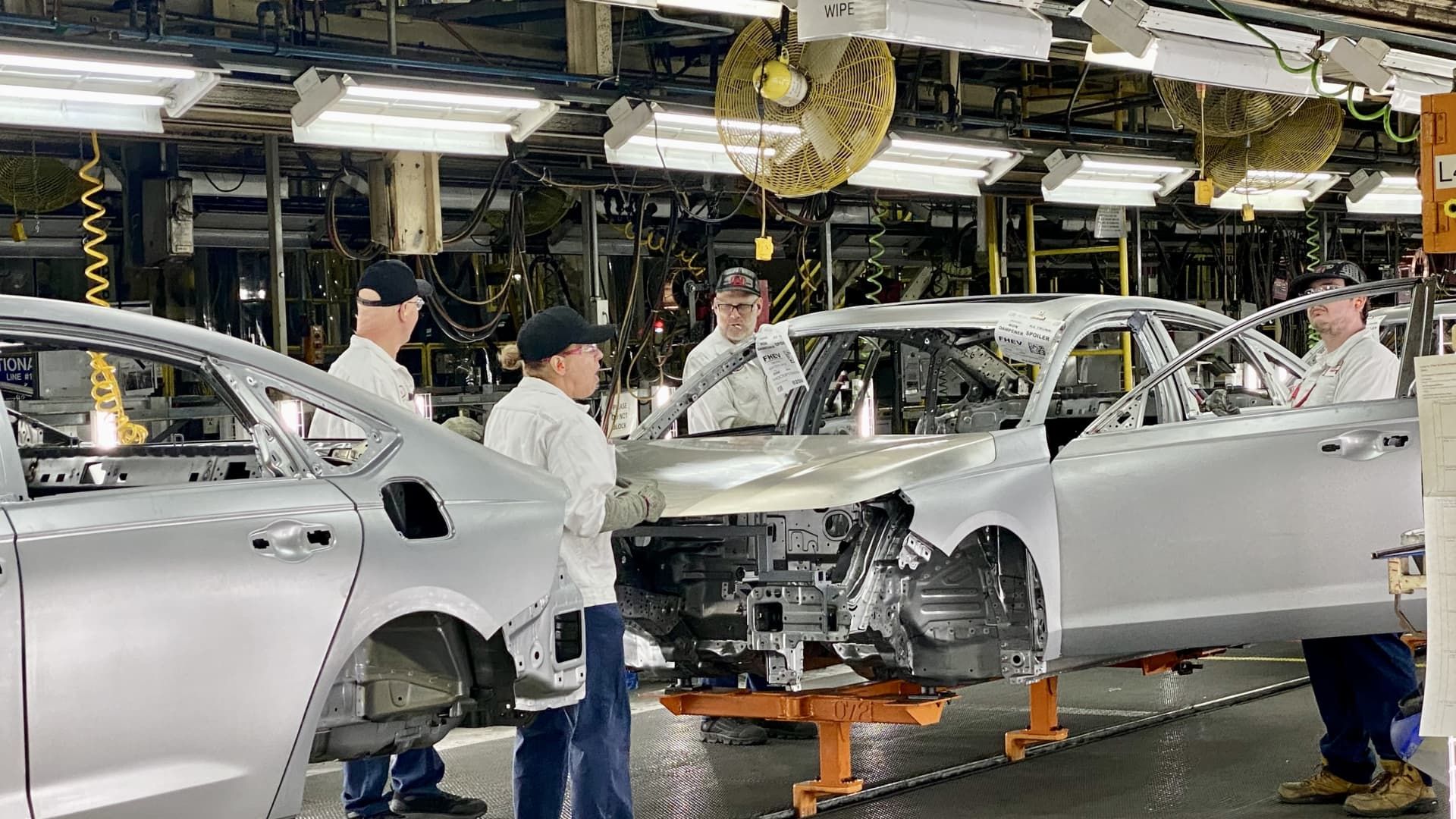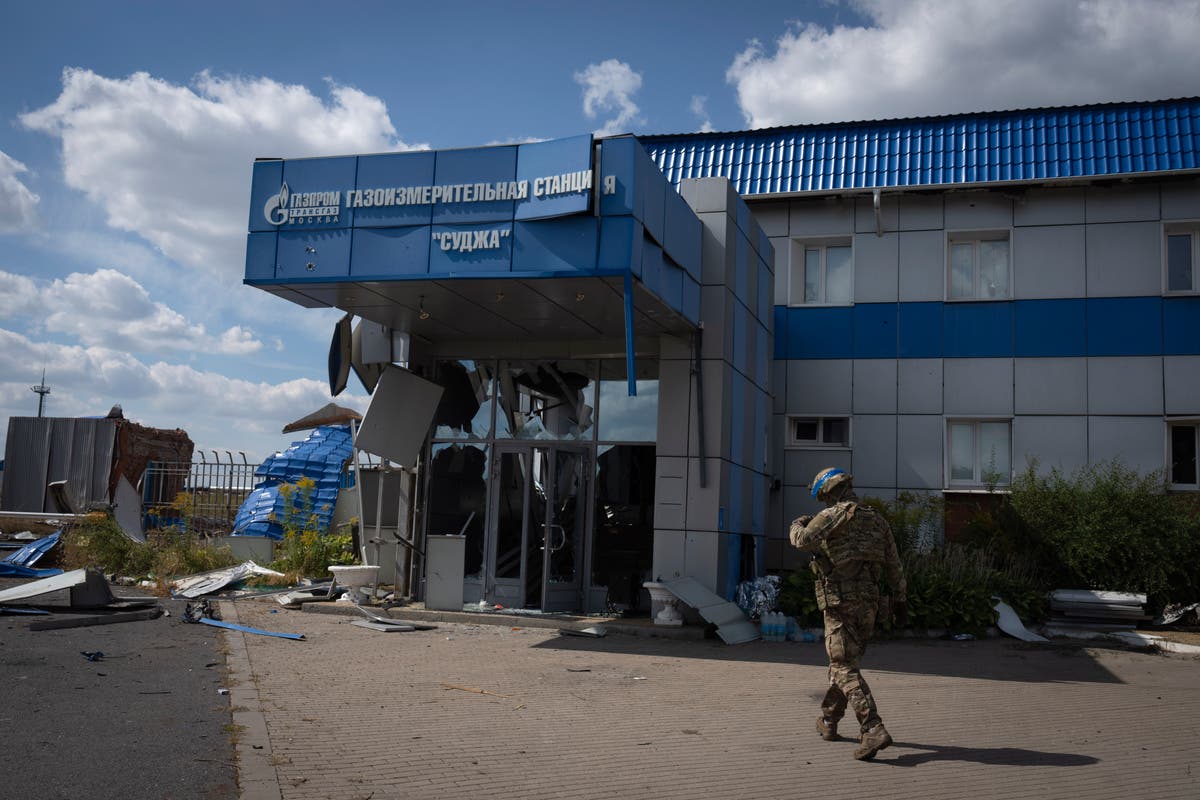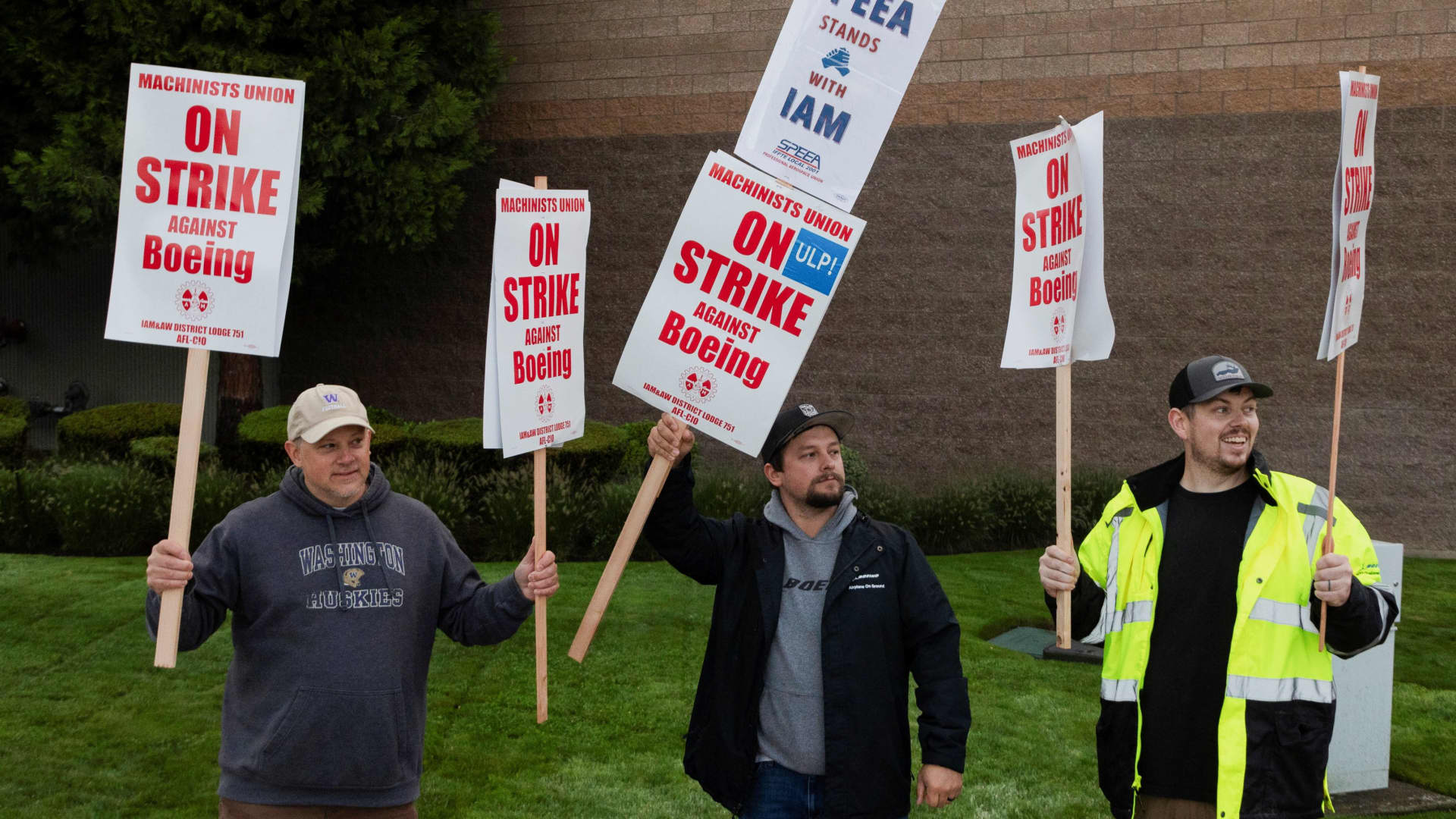A Honda sedan moves along the assembly line on January 28, 2025 at the car manufacturer's assembly plant in Marysville, Ohio.
Michael Wayland / CNBC
Marysville, Ohio – Honda engine He is launching the next generation of its manufacture in a historically unusual place for the 75 -year -old Japanese car manufacturer: Ohio.
Honda is in the midst of completing more than $ 1 billion in new investments, increased on Wednesday from $ 700 million initially announced, in the state this year. The most remarkably updates include the installation of six “giga presses”, which were known by Teslaand a new “cell” manufacturing system for its next electric vehicle battery covers.
The company EV center in OHIO, including a separate battery plant of $ 3.5 billion, will be the flagship of Honda's global manufacturing operations. That includes that its Marysville car plant is capable of producing traditional vehicles, hybrids and EVs in the same assembly line, authorities said during a one -day route through operations.
“The Honda EV hub in Ohio is establishing the global standard for the production of EVs for people, for technology and processes,” said Mike Fischer, an American leader for Honda battery vehicle projects. “As we expand the production of regional and globally, this is the footprint and characteristic performance that will be used.”
Honda shows half of one of its new battery packages for electric vehicles on January 28, 2025 in its engine and the component plant in Anna, Ohio.
Michael Wayland / CNBC
In general, such important manufacturing changes would begin in the country of origin of Honda of Japan and then would be implemented in facilities in the US. And in other places, according to the company's officials.
Ohio's investments were initially announced in October 2022 as part of the driving administration to manufacture on the coast. They are still important in the midst of threats of potential increases in tariffs for imported products such as cars by President Donald Trump.
Honda produced more than 1 million vehicles in five EE assembly plants. UU. In 2024. Around 64% were sold in the US. UU., While the rest was exported. It has an assembly plant in Mexico.
Once completed, Honda can produce approximately 220,000 vehicles per year at its Marysville plant, located in the Ohio center outside Columbus. The installation of 4 million square feet currently produces several Honda and Acura vehicles, which are expected to join later this year by a fully electric acura crossover RSX, the first EV produced by Honda.
Honda 0 Saloon and Honda 0 SUV prototypes
Sling
The Japanese automation manufacturer was late to invest in EV compared to other car manufacturers. He currently sells two totally electric crossovers, Honda Prologue and Acura ZDX, in the United States, but those vehicles are produced by General Motors In Mexico.
The new Acura crossover will be followed by the Honda 0 SUV and Honda 0 SALOON EV prototypes, the company debuted last month in the CES in Las Vegas.
Aluminum battery packages for new EVs will be produced in the Honda nearby engines complex in Anna, Ohio, the largest company of the company worldwide that has grown from a small rectangle building in 1985 to a plant of more than 2.8 million square feet.
“We are establishing this great aluminum production technology for all Honda,” said Tim Stroh, leader of the Battery Case project. “The goal here is to launch that to other products, other factors worldwide.”
A row of the new Honda high pressure foundry machines that “Megacast” or “Gigacast”, as Tesla has referred to it, the batteries for the car manufacturer in its engine and the component plant in Anna, Ohio.
Michael Wayland / CNBC
To produce battery packages and other EV components, as well as potentially engines in the future, the company is installing six massive foundry machines of 6,000 tons of high pressure than “Megacast” or “Gigacast”, as Tesla has done. He referred to him. Massive machines are the size of a small house and use a huge amount of pressure to form parts. Current Honda presses rise to 3,500 tons in Ohio.
Made correctly, the gigacasting can theoretically reduce manufacturing costs per unit by eliminating welding of dozens of body parts by launching a single module, according to the global mobility of S&P.
Once the packages are molten, Anna will be sent to Marysville and other plants to have battery cells of the Honda joint companies with a LG energy solution installed before being used in the final assembly of the EVs.
A Honda employee at the large vehicle manufacturer's assembly plant in Marysville, Ohio, demonstrates
Michael Wayland / CNBC
To combine cells and battery packages in Marysville, Honda is installing almost 60 flexible manufacturing cells or areas for the battery assembly. Instead of a traditional assembly line, where the pieces are installed as a vehicle moves, the new production process occurs parallel to the main line in areas that make any possible slowdown or problems do not affect the main line .
“This is considered the second foundation for Honda,” said Bob Schwyn, Senior Vice President of Hondlopment and Manufacturing of America. “We are using the opportunity to reinvent our manufacturing approach.”
Honda has referred to its transition to electric vehicles, including fuel cells, such as its “second foundation.” Despite the adoption of EVs slower than expected in the US and resource circulation.
Rows of new “cells”, or area, production system for assembly of electric vehicle batteries on January 28, 2025 at the Marysville assembly plant in Honda.
Michael Wayland / CNBC
These objectives also include the exclusive sale of zero emission vehicles by 2040. Many other car manufacturers have delayed or withdrawing these objectives in recent years.
The more than $ 1 billion of investments in the current OHIO facilities also include several new manufacturing processes and techniques to reduce emissions and waste, including the use of a special form of structural aluminum for EV battery packages that can recycle and reuse.
“We are using the opportunity to reinvent our manufacturing approach and create a new value in the environmental responsibility area,” Schwyn said. “This includes strategies to recover our products at the end of life and then recycle or reuse 100% of the materials, especially the finite materials so that EV batteries are essentially new deep with old slesses.”










